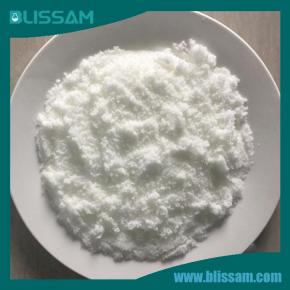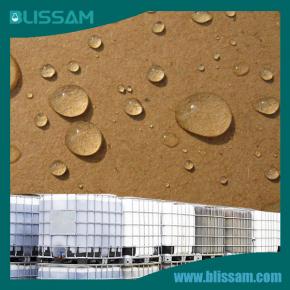In various industries, protecting materials from the damaging effects of water, moisture, and other environmental factors is crucial. Two popular solutions that offer such protection are silicone rubber and water repellents. Both of these materials are widely used for their ability to enhance durability and safeguard against the elements, but they serve different purposes and excel in different applications. In this article, we'll explore the key differences between silicone rubber and water repellents, their advantages, and how BLISSAM provides high-quality products that ensure durability and protection in various applications.
Silicone rubber is a versatile, synthetic material made from silicon, oxygen, carbon, and hydrogen. It is known for its excellent resistance to extreme temperatures, UV radiation, and chemical exposure. Silicone rubber is used in a wide range of applications, including seals, gaskets, hoses, and insulation. Its flexibility, durability, and inertness make it an ideal material for products that require long-term reliability under harsh conditions.
Advantages of Silicone Rubber:
Temperature Resistance:
Silicone rubber can withstand extreme temperatures, ranging from -60°C to 250°C, making it suitable for both high-temperature and low-temperature environments.
Water Resistance:
While silicone rubber is not entirely waterproof, it is highly water-resistant. It repels water and moisture, making it ideal for sealing applications in wet environments.
Flexibility and Elasticity:
Silicone rubber retains its flexibility and elasticity over a wide temperature range, ensuring that it does not crack or become brittle with age.
Chemical Stability:
Silicone rubber is chemically inert, meaning it does not react with most chemicals, making it suitable for use in chemically aggressive environments.

Water repellents are coatings or treatments applied to surfaces to make them resistant to water penetration. These repellents work by creating a hydrophobic barrier on the surface, causing water to bead up and roll off rather than soak in. Water repellents are commonly used on textiles, concrete, wood, and other porous materials to protect them from water damage, staining, and deterioration.
Advantages of Water Repellents:
Surface Protection:
Water repellents provide an effective barrier against water, preventing it from penetrating and damaging the material beneath. This helps extend the lifespan of the treated surface.
Breathability:
Unlike waterproof coatings, water repellents allow the material to breathe, which is essential for preventing issues like mold and mildew growth in porous materials.
Easy Application:
Water repellents can be easily applied using sprays, brushes, or rollers, making them convenient for both industrial and DIY applications.
Versatility:
Water repellents can be used on a wide range of materials, including textiles, masonry, and wood, providing protection across different surfaces.
While both silicone rubber and water repellents offer protection against moisture and environmental damage, they differ significantly in their properties and applications.
Material vs. Coating:
Silicone rubber is a solid, flexible material used to create products like seals, gaskets, and hoses. In contrast, water repellents are liquid coatings applied to surfaces to protect them from water penetration.
Long-Term Durability:
Silicone rubber is designed for long-term use, maintaining its properties over years or even decades. Water repellents, on the other hand, may need to be reapplied periodically to maintain their effectiveness.
Application Range:
Silicone rubber is ideal for applications that require high flexibility, temperature resistance, and chemical stability. Water repellents are best suited for surfaces that need protection from water but must remain breathable.
Cost and Maintenance:
Silicone rubber products tend to have a higher upfront cost but require minimal maintenance. Water repellents are generally more affordable but may require regular reapplication to maintain their protective properties.

BLISSAM is a trusted provider of both silicone rubber products and water repellents, offering solutions that cater to various industrial and commercial needs. Here’s why BLISSAM stands out:
Quality Assurance:
BLISSAM ensures that all products meet stringent quality standards, providing reliable and long-lasting protection.
Customization:
BLISSAM offers customized silicone rubber products and water repellents tailored to specific applications, ensuring optimal performance.
Technical Support:
BLISSAM provides expert guidance and support to help customers select the right product for their needs and ensure proper application and usage.
Sustainability:
BLISSAM is committed to environmental responsibility, offering products that are both effective and eco-friendly.
Q1: Can BLISSAM’s silicone rubber products be used in high-temperature applications?
A1: Yes, BLISSAM’s silicone rubber products are designed to withstand extreme temperatures, ranging from -60°C to 250°C. This makes them ideal for high-temperature applications, such as seals and gaskets in industrial machinery and automotive engines.
Q2: How often should BLISSAM’s water repellents be reapplied?
A2: The reapplication frequency of BLISSAM’s water repellents depends on the material and environmental conditions. Typically, they should be reapplied every 1 to 3 years for optimal protection, especially in areas exposed to harsh weather conditions.
Q3: Are BLISSAM’s silicone rubber products resistant to chemicals?
A3: Yes, BLISSAM’s silicone rubber products are chemically inert and resistant to a wide range of chemicals, including acids, bases, and solvents. This makes them suitable for use in chemically aggressive environments, such as laboratories and industrial plants.
Q4: Can BLISSAM’s water repellents be used on concrete surfaces?
A4: Absolutely. BLISSAM’s water repellents are formulated for use on a variety of surfaces, including concrete. They help protect concrete from water penetration, freeze-thaw damage, and staining, extending the lifespan of the structure.

Both silicone rubber and water repellents offer valuable protection against moisture and environmental damage, but they serve different purposes and excel in different applications. Whether you need long-term durability in harsh conditions or a breathable barrier to protect surfaces, BLISSAM provides high-quality products that deliver reliable and effective protection. By choosing BLISSAM, you can ensure that your materials are safeguarded against the elements, maintaining their integrity and performance for years to come.
Products: Silicone Water Repellent BL-EM02 , Water repellent for wood BL-EM05
Contact:
Phone: +86-15957191858
E-mail: info@blissam.com
Whatsapp:+8615957191858
Add: A647, No. 9, Xiyuan Road, Xihu District, Hangzhou, Zhejiang, China
We chat
